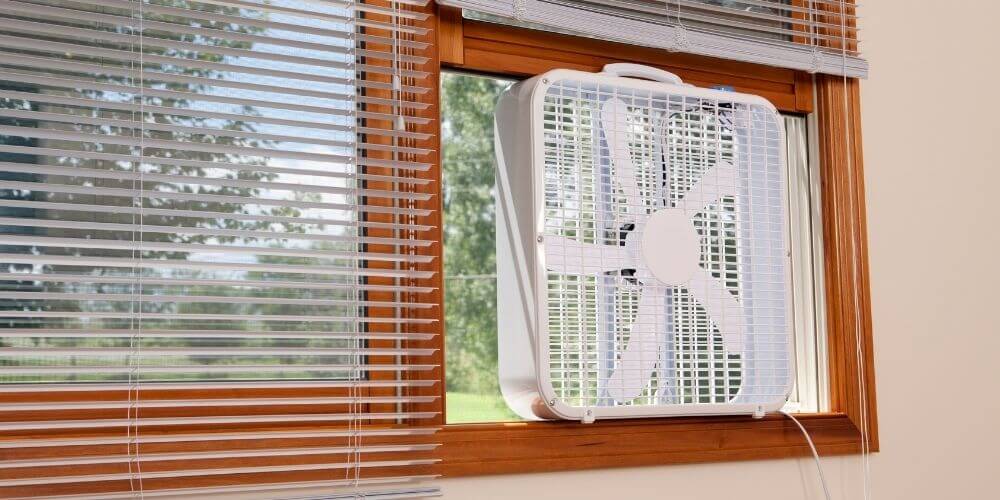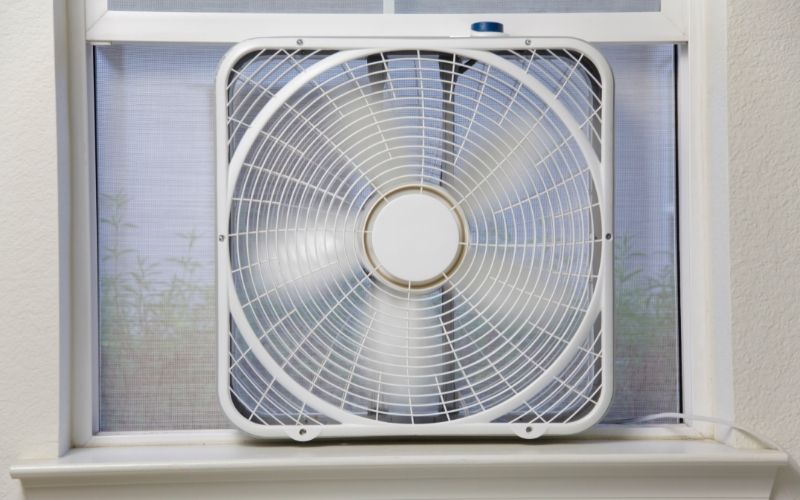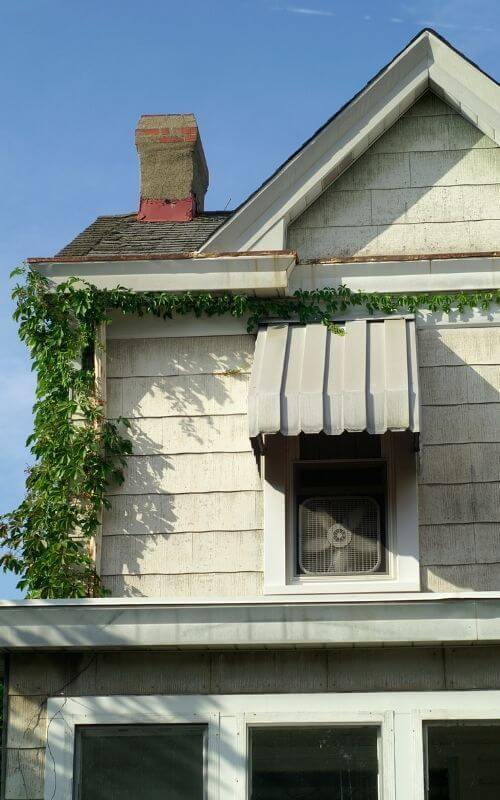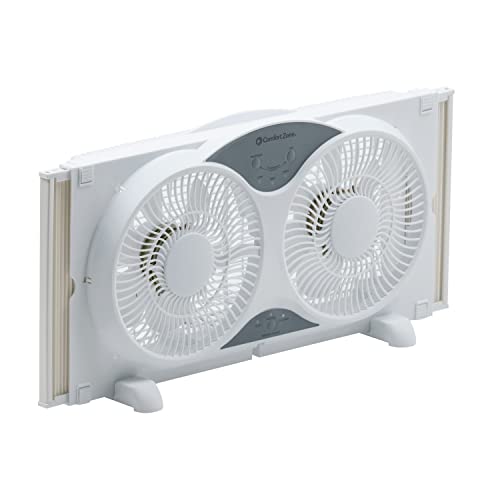Box fans are very efficient at circulating air to keep you cool, and are particularly good to place in front of a window.
But, you may be wondering how much electricity box fans actually use, and how much it’s costing when you use one. After all, we’re all looking to reduce our energy bills and do our bit to save the environment these days, right?
So, read on for a detailed explanation of how much electricity box fans use.

How Many Watts Does A Box Fan Use?
Wattage is a measure of how much electricity an appliance needs to run. Larger, more powerful appliances have a higher wattage – so they use more electricity.
Most box fans between are between 50 and 100 watts, with the average 20-inch box fan drawing 75 watts of electricity when used at full speed. But, if you run your fan at its lowest speed setting, it may use only half as much electricity.
Smaller box fans tend to use less electricity than larger ones. Small 10-inch box fans use around 25 watts of power, which is much less than the 75 watts that a larger fan uses. However, they also don’t produce as much airflow, so they may not be suitable for all homes.
When buying a box fan, it’s wise to get one that’s large enough for your needs, knowing that you can always turn down the speed setting to reduce electricity usage and prevent the room from cooling too much.

Do Box Fans Use a Lot of Electricity?
With an average wattage of just 75 watts, box fans don’t use a lot of electricity. While they do use around 50% more electricity than a ceiling fan, this is still only a fraction of that used by an air conditioner, which can have a wattage of between 500 and 5000 watts.
The electricity used by a box fan is a similar amount to a 65-inch LED TV or a standard-sized refrigerator. Box fans aren’t particularly heave in terms of energy usage, so you don’t need to worry too much about them driving up your monthly bill.
How Much Electricity Does A Box Fan Use Per Hour?
Most box fans use between 50 watt-hours (0.05 kWh) and 100 watt-hours (0.1 kWh) of electricity per hour, with the average 20-inch box fan using 75 watt-hours (0.075 kWh) per hour on full speed.

How Much Does It Cost To Run A Box Fan?
The exact amount that it costs to run a box fan depends on the model of the fan, but also on how much you pay for electricity.
Electricity rates vary quite a lot, but the average American pays $0.14 per kWh for electricity. You can check the average for your state here.
On average, it costs around one cent per hour to run a box fan in the United States. Even with the largest, most powerful box fans in states with high electricity rates, it should cost no more than 3 or 4 cents per hour.
To work out how much an appliance costs per hour, you can use this formula:
Kilowatts X Cost of Energy
So
0.075 x 14 cents = 1.05 cents per hour
Box Fan Energy Usage Calculator
You can use the calculator below to work out exactly how much it’s costing to run your fan. Just enter the wattage and how much you pay for electricity and the calculator will do the math for you.
How Much Does It Cost To Run A Box Fan Per Day?
Running a box fan costs around 13 cents per day. This is the price of electricity for an average 20-inch box fan on the highest setting for 12 hours per day, based on the average price of electricity in the United States in 2022.
If you use a larger or smaller fan, turn the speed down, turn it off when you leave the room or have a particularly high or low electricity tariff, then the actual price that you pay will be different.
How Much Does It Cost To Run A Box Fan 24/7
Running a box fan 24/7 will cost between $5 and $10 per month. However, if you use a lower speed setting and have a lower electricity rate, it may cost as little as $2 per month.
Is It Cheaper To Run a Box Fan Or A Ceiling Fan?
Ceiling fans are generally cheaper to run than box fans as they have an average wattage of between 15 and 90, compared to 50 to 100 watts for a box fan. That said, there are some ceiling fans that use more power than some box fans, so it really depends on the model you choose.
Most people prefer ceiling fans to box fans as they’re more aesthetically pleasing and can be used to circulate warm air in the winter as well as provide a cool breeze in the summer.
That said, box fans do also have their advantages. There’s no installation required, you simply plug them in, and because they’re portable you can direct the airflow right where you need it. Plus, if it’s hotter inside your house than outside, you can put it in the window to draw cool air in.

Is A Box Fan Worth it?
Box fans are a cost-effective way to cool a room. By using a box fan instead of air conditioning, you can easily save upwards of $100 per month on electricity, meaning that the fan will pay for itself in no time at all.
Suggested read: Air Conditioner Vs Fan Electricity Usage
The most efficient box fans are twin fans. If you place one of these in front of a window and set one side to blow inwards and one side to blow outwards then you push warm out out of a room while simultaneously drawing cool air in from outside.

Box Fan FAQs
Box fans are very energy efficient. They don’t use a lot of electricity yet manage to produce sufficient cooling. If the air outside is cooler than inside, then box fans become even more efficient when placed in a window as they introduce cooler air into the room.
Box fans are designed so that they can be kept running 24 hours per day without any damage. You can leave a box fan running continuously for many years before the motor will eventually burn out.
A box fan should face into a room to blow cool air in from outside. If you have two box fans, you can have one pointing inwards and one pointing outwards for maximum efficiency.
